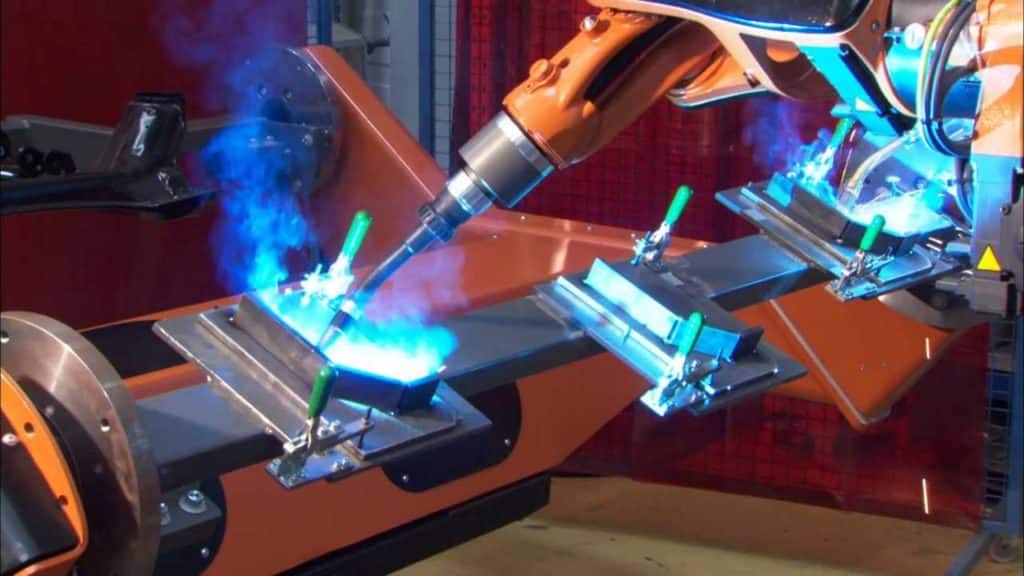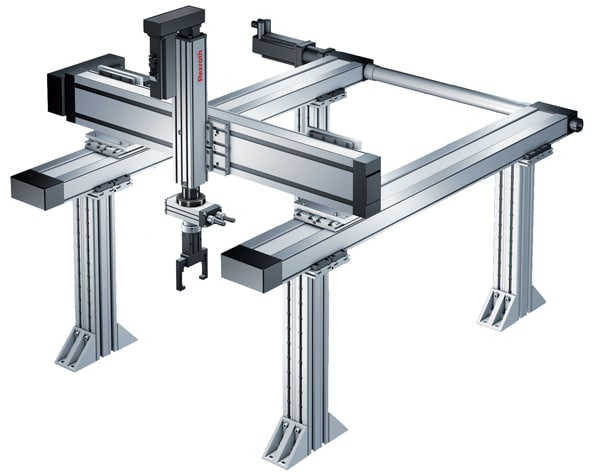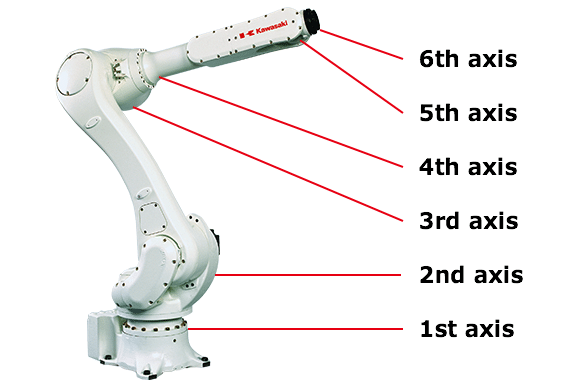
There are two popular types of industrial welding robots. The two are articulating robots and rectilinear robots. Robotics control the movement of a rotating wrist in space. A description of some of these welding robots are described below:
Rectilinear robots
Rectilinear robots move in line in any of three axes (X, Y, Z). In addition to linear movement of the robot along axes there is a wrist attached to the robot to allow rotational movement. This creates a robotic working zone that is box shaped.


Articulating robots
Articulating robots employ arms and rotating joints. These robots move like a human arm with a rotating wrist at the end. This creates an irregularly shaped robotic working zone.
There are many factors that need to be considered when setting up a robotic welding facility. Robotic welding needs to be engineered differently than manual welding. Some of the consideration for a robotic welding facility are listed below:
- Accuracy and repeatability
- Number of axes
- Reliability
- Fixtures
- Programming
- Seam tracking systems
- Maintenance
- Controls
- Weld monitors
- Arc welding equipment
- Positioners
- Part transfer
A robotic welding system may perform more repeatably than a manual welder because of the monotony of the task. However, robots may necessitate regular re-calibration or reprogramming.
Robots should have the number of axes necessary to permit the proper range of motion. The robot arm should be able to approach the work from multiple angles.
Robotic welding systems are able to operate continuously, provided appropriate maintenance procedures are adhered to. Continuous production line interruptions can be minimized with proper robotic system design. Planning for the following contingencies needs to be completed:
- Rapid substitution of the inoperable robots.
- Installing backup robots in the production line
- Redistributing the welding of broken robots to functioning robots close by.
Source: Welding Engineer
Check this post to learn more about the benefits of robotic welding over manual welding.